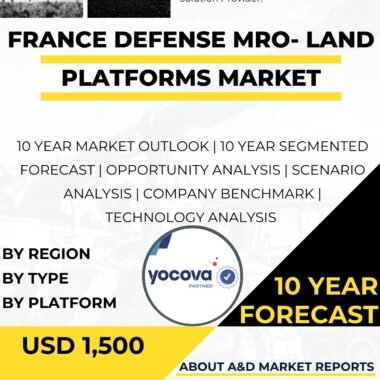Description
The Germany light tank market has been an essential segment of the country’s defense industry, reflecting its commitment to military modernization and maintaining a capable land force. Light tanks are versatile armored vehicles designed to provide rapid mobility, reconnaissance capabilities, and support for infantry operations. Despite Germany’s focus on heavy and main battle tanks, the light tank market has witnessed developments and interest in recent years due to changing military doctrines, emerging threats, and the need for agile and deployable ground forces.
Historically, Germany has been renowned for its armored warfare capabilities, exemplified by iconic tanks like the Leopard 2 main battle tank. The emphasis on heavy tanks was primarily driven by the country’s historical experiences and the specific requirements of the Cold War era. However, in recent times, there has been a growing recognition of the importance of light tanks as part of a modern and flexible military force.
One of the main drivers of the Germany light tank market is the changing nature of warfare and the evolving security landscape. Traditional large-scale conflicts between superpowers have given way to more complex and asymmetric threats, such as insurgencies, terrorism, and territorial disputes. In these scenarios, light tanks offer advantages in maneuverability, rapid response, and the ability to operate in diverse environments, including urban areas and rugged terrains.
The resurgence of conventional peer-to-peer conflicts and hybrid warfare has also brought light tanks back into focus. These conflicts often involve a combination of conventional and irregular forces, requiring a mix of heavy and light armored vehicles to address various operational requirements effectively.
Furthermore, the need for expeditionary capabilities has become increasingly important in modern military operations. Light tanks can be more easily transported by air, sea, or rail, making them suitable for rapid deployments and international peacekeeping missions. As Germany has demonstrated its commitment to participating in international peacekeeping and crisis response efforts, the demand for deployable light tanks has grown.
Another factor contributing to the interest in light tanks is the integration of new technologies and advancements in armor and weapon systems. The incorporation of modern sensors, communication systems, and fire control technologies has significantly enhanced the situational awareness and effectiveness of light tanks on the battlefield. Furthermore, the development of advanced armor materials, such as composite materials and reactive armor, has improved the vehicle’s protection while keeping its weight at an acceptable level.
Germany’s domestic defense industry is well-positioned to respond to the demand for light tanks. The country hosts several renowned defense companies with experience in armored vehicle design and manufacturing. These companies have a long history of producing military vehicles and have the engineering expertise required to develop cutting-edge light tanks that meet the specific needs of the German Armed Forces and potential export customers.
Moreover, Germany’s commitment to international defense cooperation and joint development programs has opened up opportunities for collaboration with other nations. Partnering with allied countries on light tank projects can not only share development costs but also enhance interoperability and increase the market potential for these vehicles globally.
However, the light tank market in Germany also faces challenges. One of the main challenges is striking the right balance between heavy and light armored capabilities in the face of budget constraints. Heavy tanks remain a significant investment for any military, and determining the optimal mix of heavy and light armored assets requires careful planning and analysis of potential threats and operational scenarios.
Additionally, the export potential of German light tanks may be subject to international export regulations and political considerations. The sensitive nature of military technology and concerns about potential use in conflicts could restrict the market’s growth, especially for sensitive regions and customers.
In conclusion, the Germany light tank market is an essential aspect of the country’s defense industry, reflecting the evolution of military doctrine and the need for agile and deployable ground forces. While Germany has been historically focused on heavy tanks, the changing security landscape and emerging operational requirements have brought light tanks into the forefront. As Germany continues to prioritize modernizing its military capabilities and collaborating with international partners, the light tank market is expected to play a significant role in the country’s armored forces and international defense cooperation efforts.




